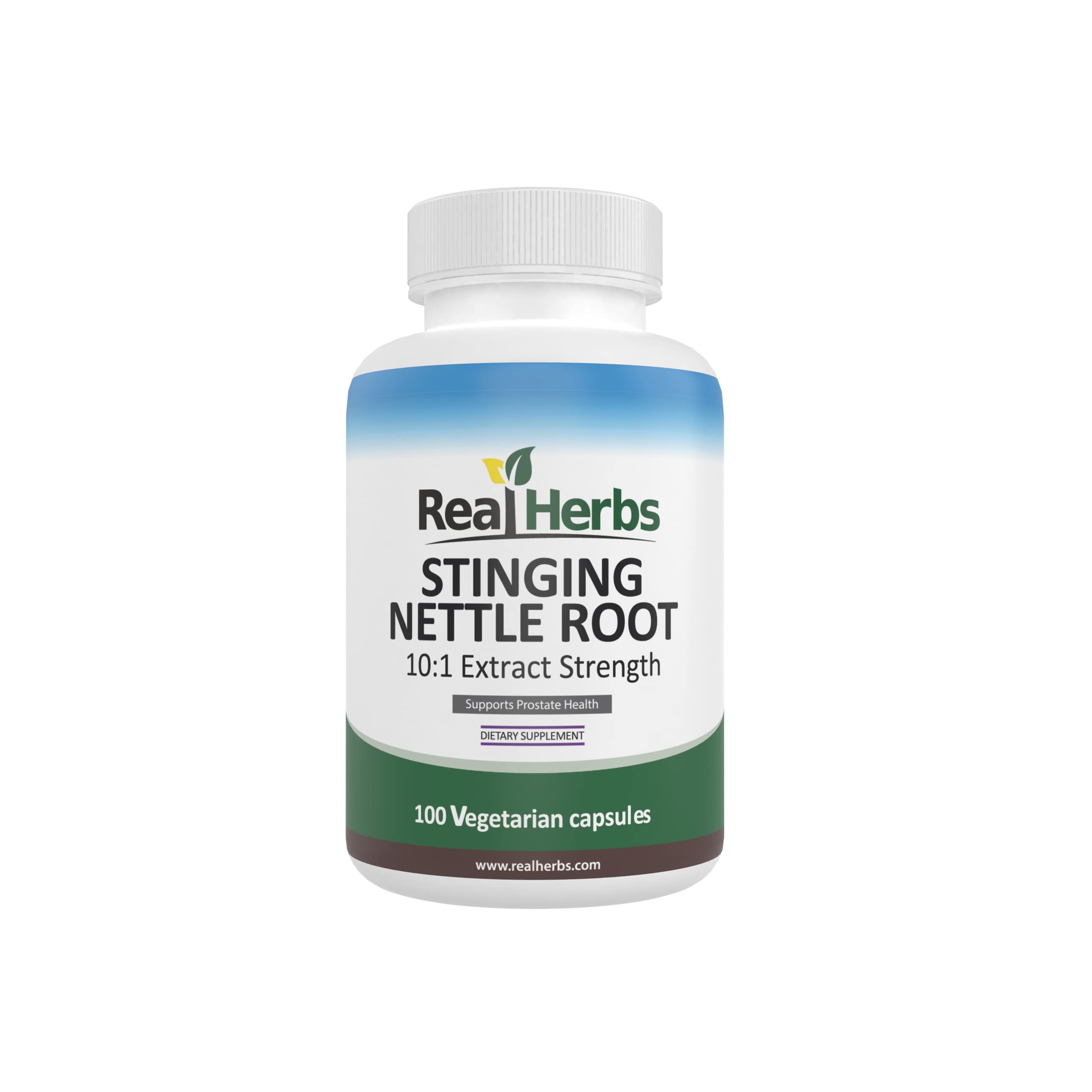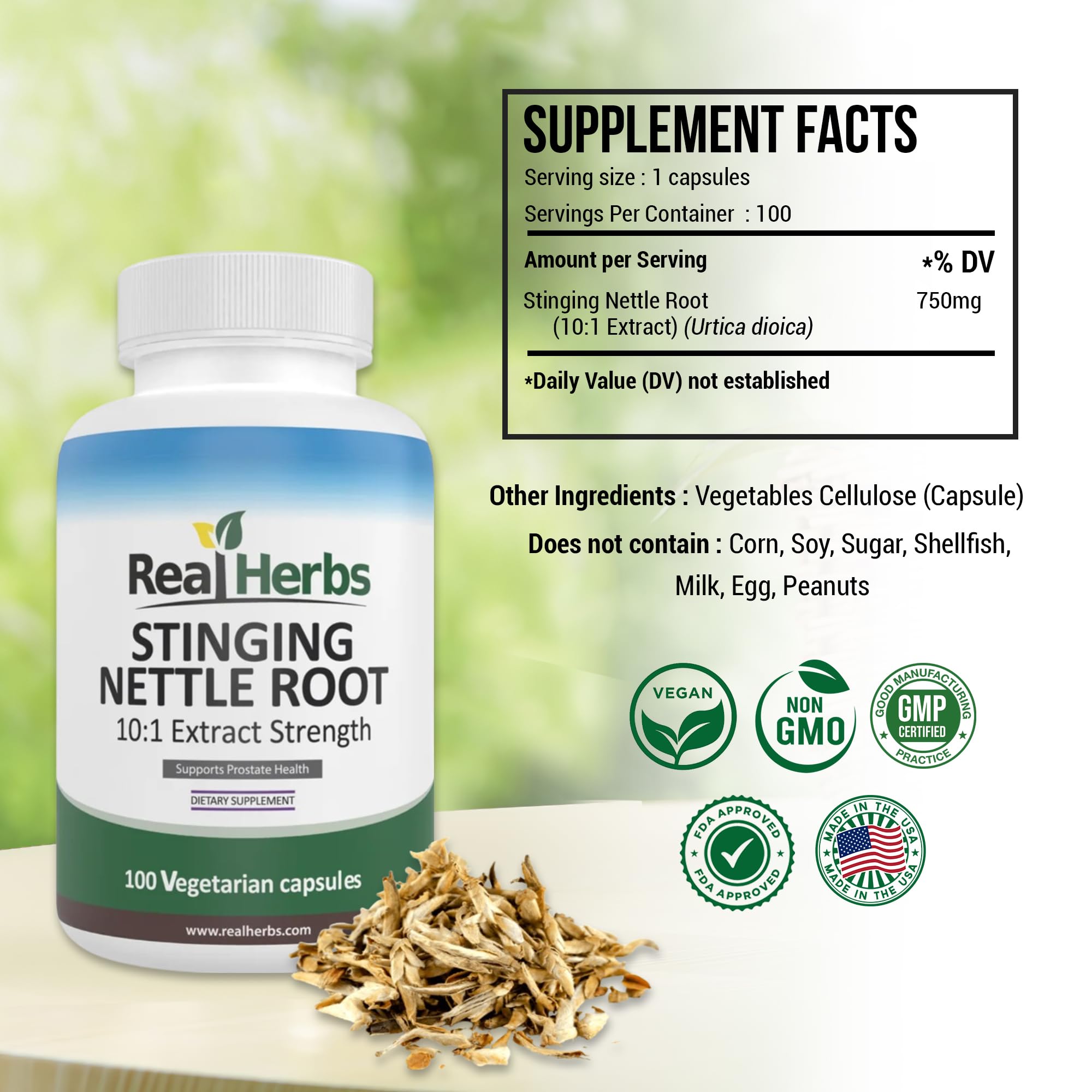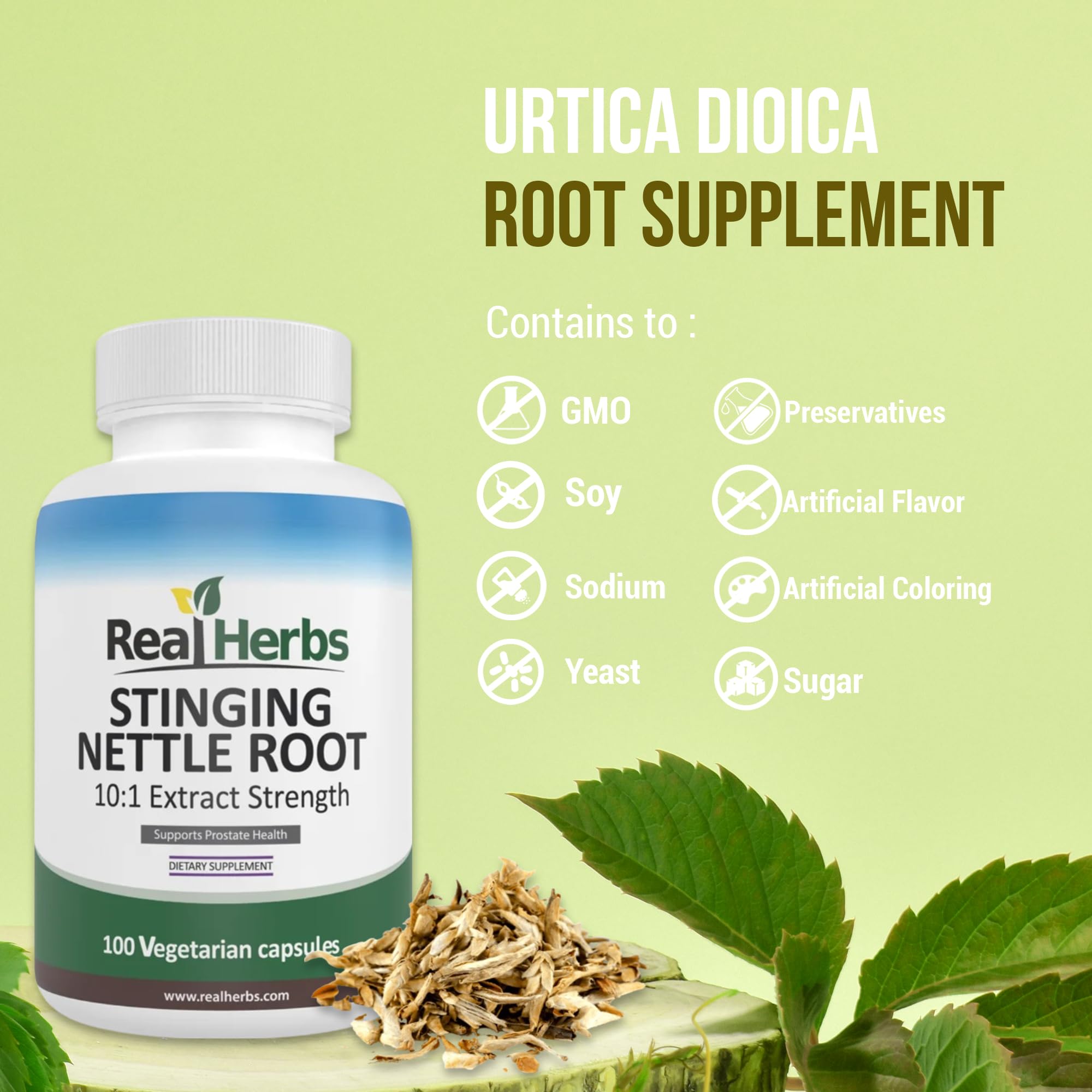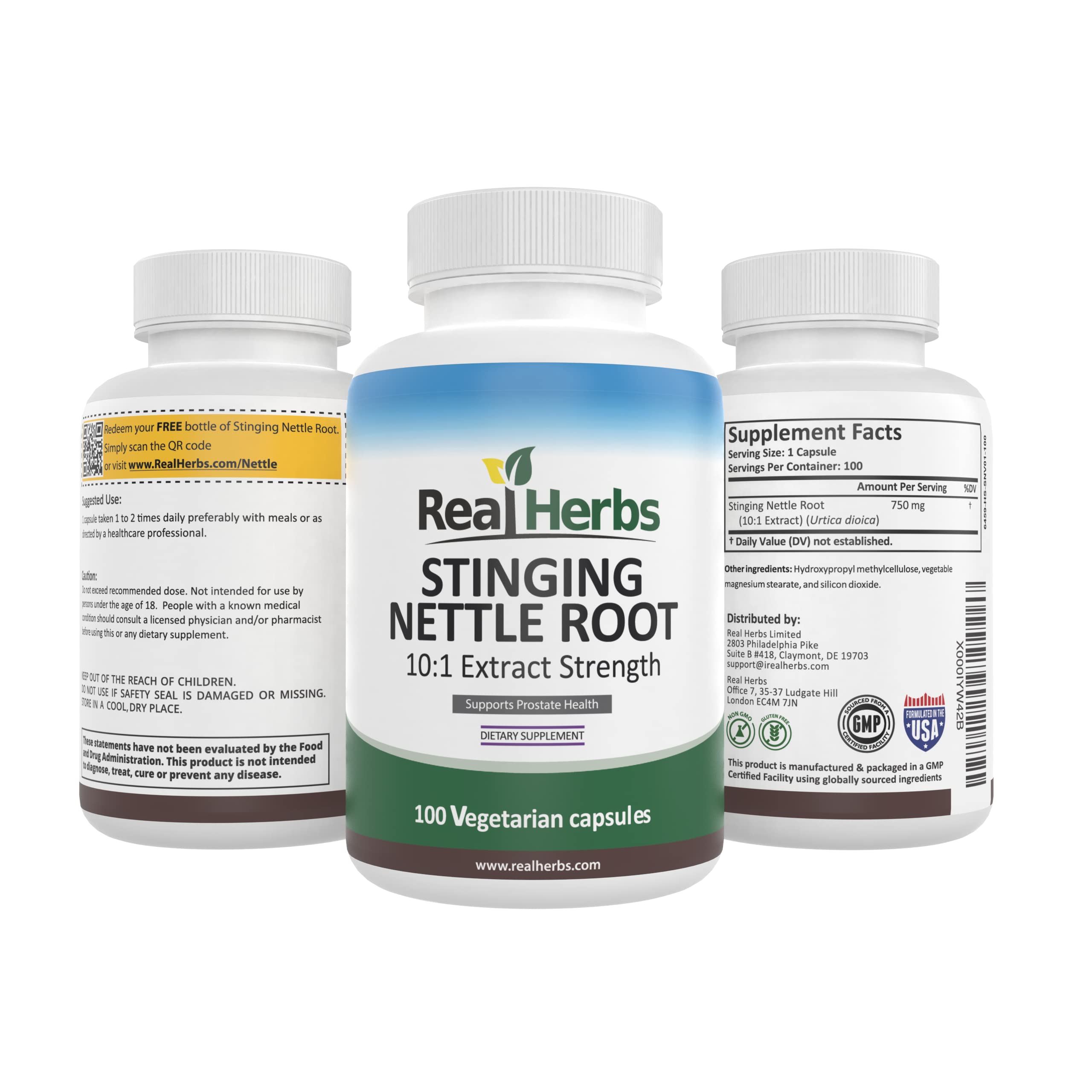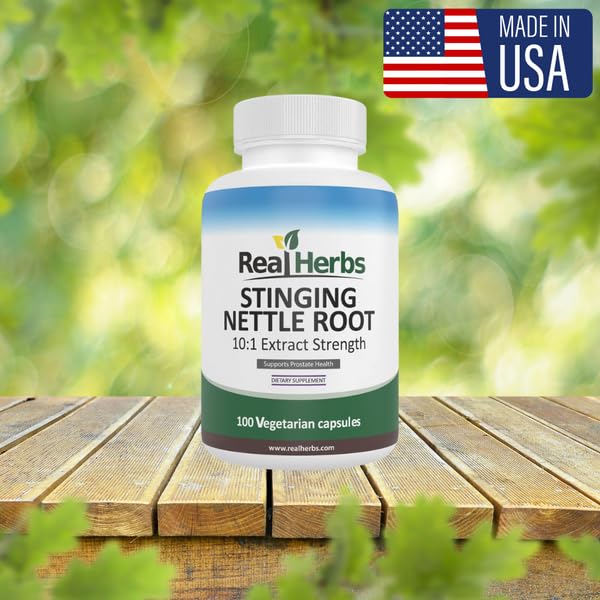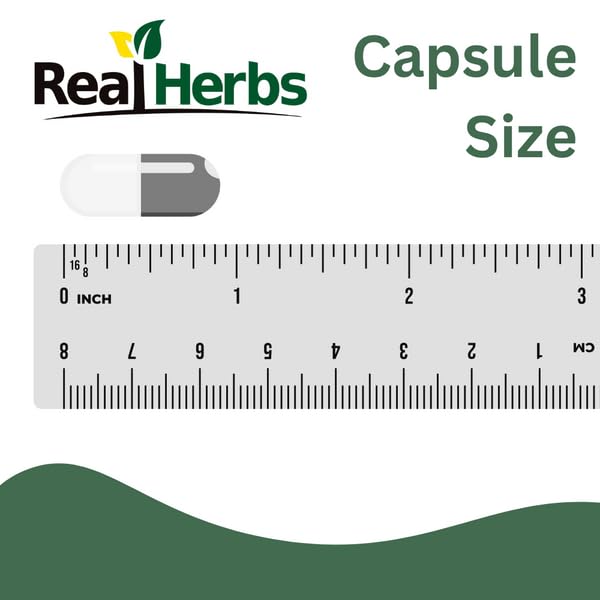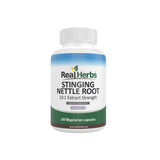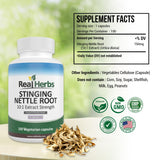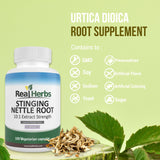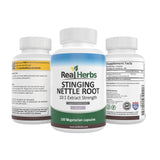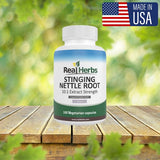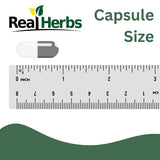How to Take Stinging Nettle Root: Dosage, Timing, and Best Practices
Stinging nettle root (Urtica dioica) is a well-researched herbal extract used to support prostate health, hormone balance, and urinary function. But to experience its full benefits, it’s crucial to take it the right way—at the right dosage, time, and in the correct form.
This evidence-based guide will show you how to take stinging nettle root effectively, whether your goal is to reduce nighttime urination, support hormonal health, or improve hair vitality.

Why the Right Dosage Matters
Stinging nettle root is not a one-size-fits-all supplement. Dosage can vary based on the form of the extract (e.g., raw, powdered, or 10:1 concentrated extract), the individual’s goal, and whether it's combined with other herbal supplements.
Recommended Dosage Based on Extract Type
| Form | Typical Dosage | Notes |
|---|---|---|
| Raw Root Powder | 2–4 grams daily | Low potency; requires large amounts |
| 10:1 Extract Capsules | 500–750mg daily | Equal to 5,000–7,500mg raw root |
| Tincture (1:5) | 1–2 mL, 2x per day | Faster absorption, useful for blending |
| Tea (boiled root) | 1–2 tsp dried root | Traditional use, mild strength |
When Is the Best Time to Take It?
Stinging nettle root is usually taken once or twice per day. Here's how to optimize timing:
- Morning: Ideal for hormone modulation and DHT blocking throughout the day
- Night: Helps reduce nighttime urination and may improve sleep quality
If taking it twice daily, space doses 12 hours apart—e.g., 8AM and 8PM.
Should You Take It With or Without Food?
Stinging nettle root can be taken with or without food, but for sensitive stomachs, it’s best to take it with meals. Capsules and tinctures are better absorbed when accompanied by some dietary fat.
How Long Until You See Results?
It depends on the condition being treated:
- Urinary relief (BPH symptoms): 1–2 weeks
- Hormonal balance and DHT reduction: 4–8 weeks
- Hair health or immune function: 8–12 weeks of consistent use
Clinical studies on BPH patients found statistically significant improvements within 6 weeks of daily use at 600mg of stinging nettle root extract.
Can You Take It Every Day?
Yes. Nettle root is safe for daily use in moderate, standardized doses. In fact, most benefits—including prostate and hormonal effects—require long-term, consistent supplementation.
Combining Nettle Root with Other Supplements
Stinging nettle root is frequently paired with:
- Saw Palmetto: For enhanced prostate and DHT support
- Pygeum africanum: For urinary and libido benefits
- Zinc: To support testosterone regulation
Research shows these combinations may have a synergistic effect on prostate symptom relief and androgen regulation.
Who Should Avoid Stinging Nettle Root?
- Pregnant or breastfeeding women
- Individuals on diuretics or blood pressure medication (consult your doctor)
- People with severe kidney conditions (root has mild diuretic effects)
Backed by Clinical Research
- Safarinejad et al. (2005): Found 600mg/day of stinging nettle root significantly reduced BPH symptoms in a 6-month RCT (n = 620). View Study
- Meta-Analysis (2020): Review of 5 RCTs confirmed nettle root's effect on IPSS, flow rate, and prostate volume. [Citation pending DOI]
Conclusion: Best Practices Summary
- Take 500–750mg of 10:1 extract once or twice daily
- Take with food if you experience stomach sensitivity
- Use consistently for 4–8 weeks for hormonal or hair effects
- Pair with saw palmetto or zinc for added benefits
Where to Buy High-Quality Nettle Root
Choose a trusted brand with transparent sourcing and 10:1 extract strength like Real Herbs.
FAQ
Can I take nettle root at night?
Yes. Many people take it in the evening to reduce nighttime urination and promote better sleep.
Can I take it indefinitely?
Yes, if well-tolerated. Long-term studies support safe daily use in standard doses.
What’s the best form?
10:1 extract capsules offer convenience, potency, and consistency. Tea and tinctures are alternatives but may vary in strength.
Does it affect testosterone?
Yes, indirectly. It binds SHBG and reduces DHT, potentially increasing free testosterone without raising total testosterone.

